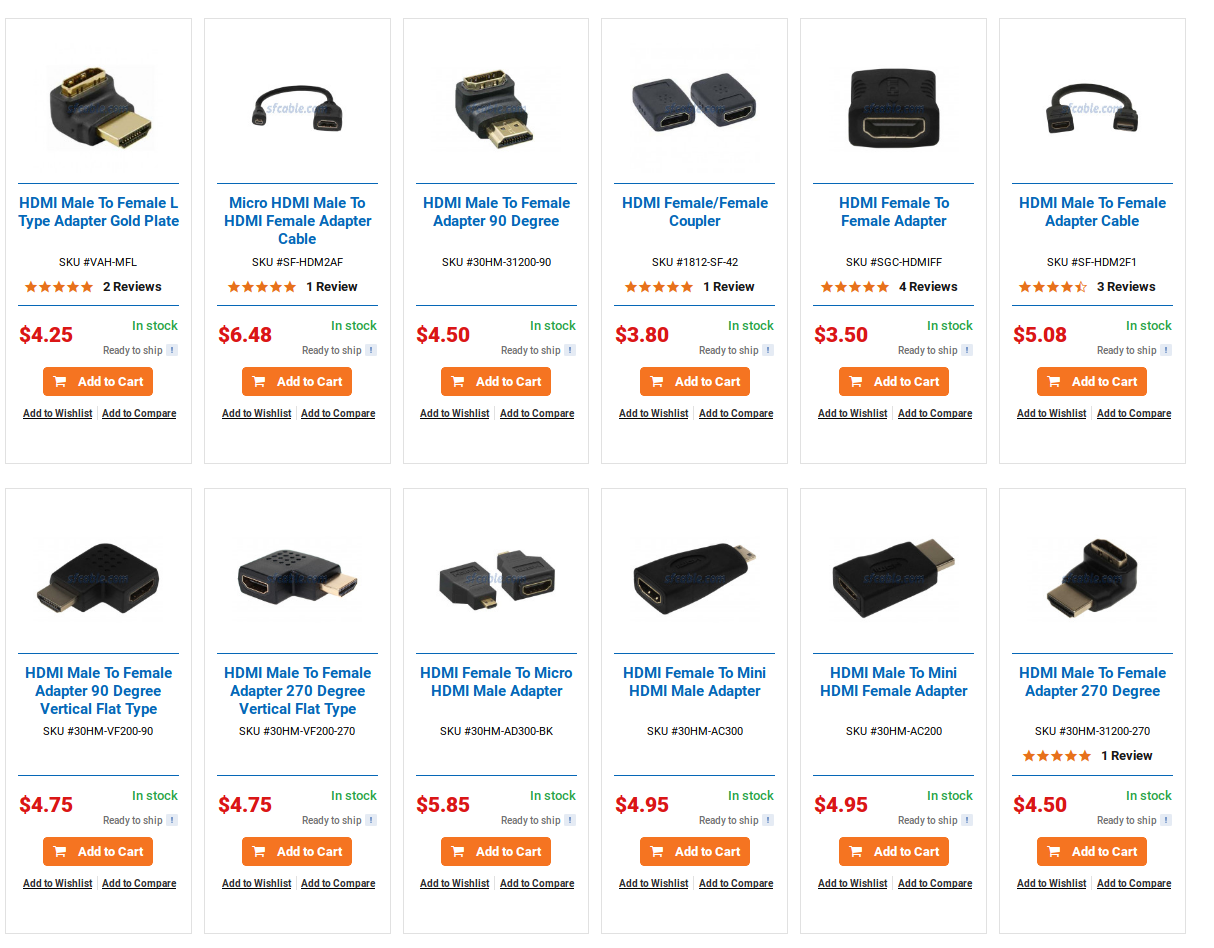How to Choose The Right HDMI Cable For Your Electronic Device?
“I am wondering what kind of cable would be right for my TV?” the users of HDMI cables often online ask this question to the online electronic vendors. Well, if you do not have much knowledge about HDMI, this is ought to happen. If you are one of the people who often shuffle between different HDMI Cables with confusion as to which one to buy, this article is for you.
Before you buy HDMI Adapters for yourself, you need to keep some pointers in mind, shortlist your choices and get rid of the extra cables. But before that, let’s know about the different HDMI Cables and their types available in the market:

Standard HDMI Cable
This is the most commonly used and standardized cable when it comes to home use and home theatre applications. It has the potential to transmit 1080i or 720p HD video resolutions. You will majorly see these kinds of resolutions with digital broadcast, satellite television and DVD players.
Standard HDMI Cable with Ethernet
The performance and video resolution of Standard HDMI Cable with Ethernet is the same as HDMI Cable. (720p or 1080i) However, this has a special data channel for device networking known as - HDMI Ethernet Channel. (HEC) and works only if the connected device and source both have HEC functionality.
High Speed HDMI Cable
Do you have a TV with highly advanced display technology like 4K and 3D? Then High Speed HDMI Cable is your catch. This can support resolutions of up to 1080p and more. So, in case you want to future proof your system and might find the need to add certain functionalities, this is the cable you must invest into. There are several companies based in the USA who provide high speed HDMI cables at cost-effective rates. But before that, you must know your purpose and find out about the one that works the best for you.
High Speed HDMI Cable with Ethernet
This cable is again similar in some ways to HDMI Cable with Ethernet. It offers 1080p plus resolution and performance. This cable has a specific data channel for device networking known as HDMI Ethernet Channel. (HEC) To get it working, you must ensure that the source and connected device have HEC functionality. It keeps the use of ethernet cable at bay and enables internet friendly HDMI devices to share internet connection through HDMI link.
Now, let’s talk about the points you need to consider before buying these cables:

Know the Purpose
First things first, you must know where exactly are you going to put these to use. In case you have planned to use it for automotive or 3D equipment, a standard HDMI cable will not suffice.
Check the Ethernet Capabilities
The installation manual generally mentions the capability of your ethernet cable. So, you can go through it while making installations. However, if the cable is of higher ethernet capabilities, you might end up wasting more functionalities than you would generally need.
Size Does Matter
You can decide the cable length of your HDMI cable based on the installation requirements you have. You should also know the type of connector you would need. Also, check the anatomy of the equipment you have to connect your HDMI cable with. Especially when it comes to a standalone or a portable device.
So, How Do I Identify the Right HDMI Cable?
Some HDMI cable users might think that cable with strong plugs, thick jackets and internal wiring are strong. And that’s why they are expensive. This is so not true. If you search online, you are sure to find these cables at the most cost-effective rates.
It is better to go for cables with strong jackets whenever you want to make installations around the floor. This is because there are more chances of them getting damaged. Sometimes, strongly built and expensive cables can also disappoint you as they have heavy plugs which damage your equipment in a long run. So, it is better if the word “strong” doesn’t influence you as it won’t make much of a difference to the audio and video quality.



Comments
Post a Comment